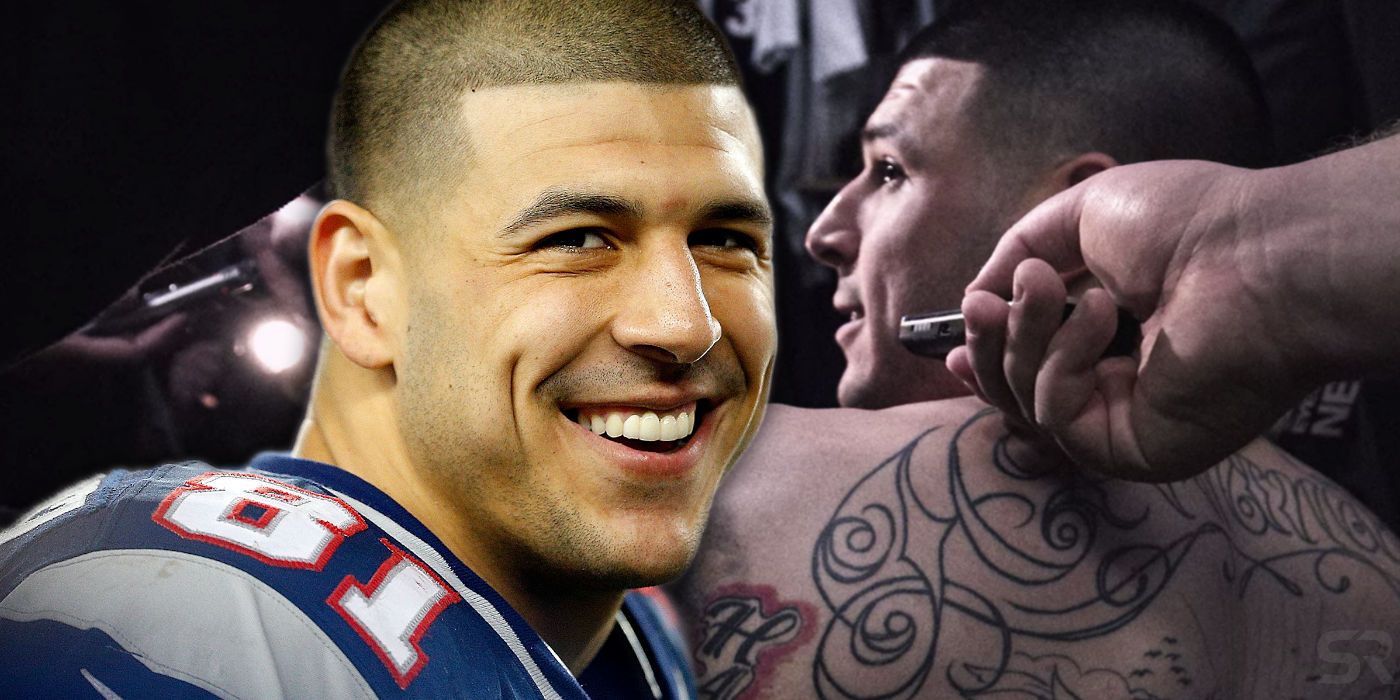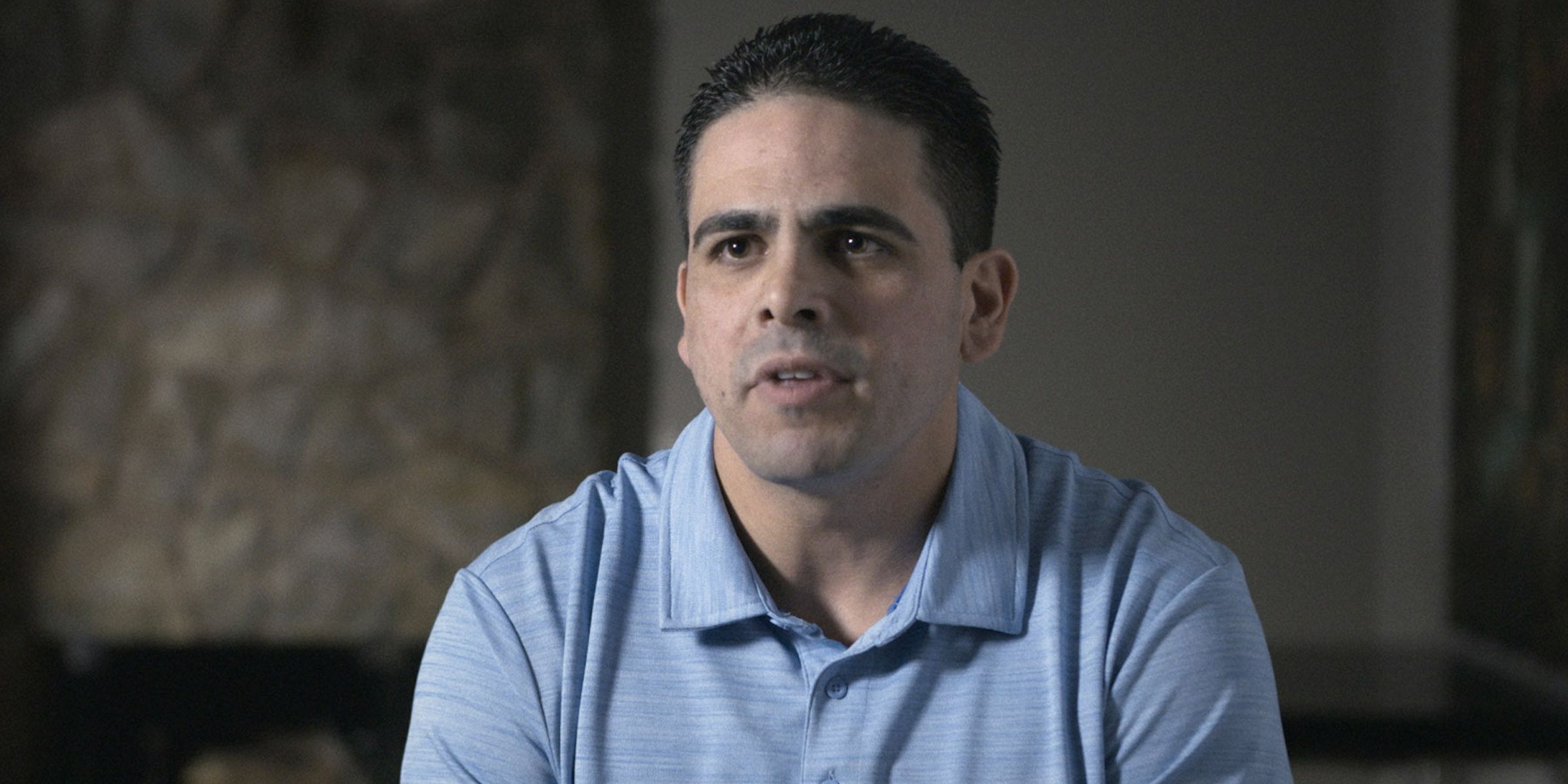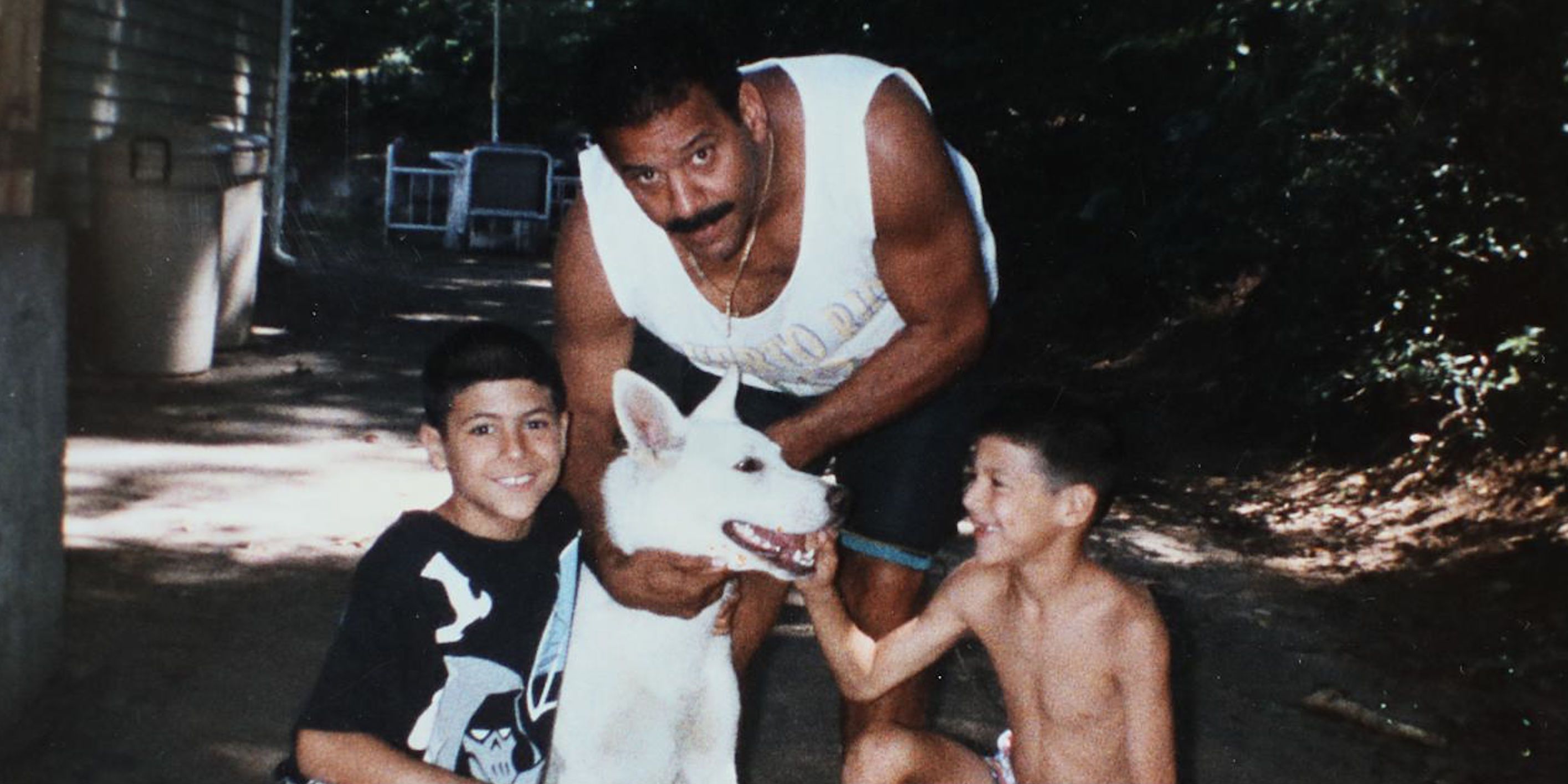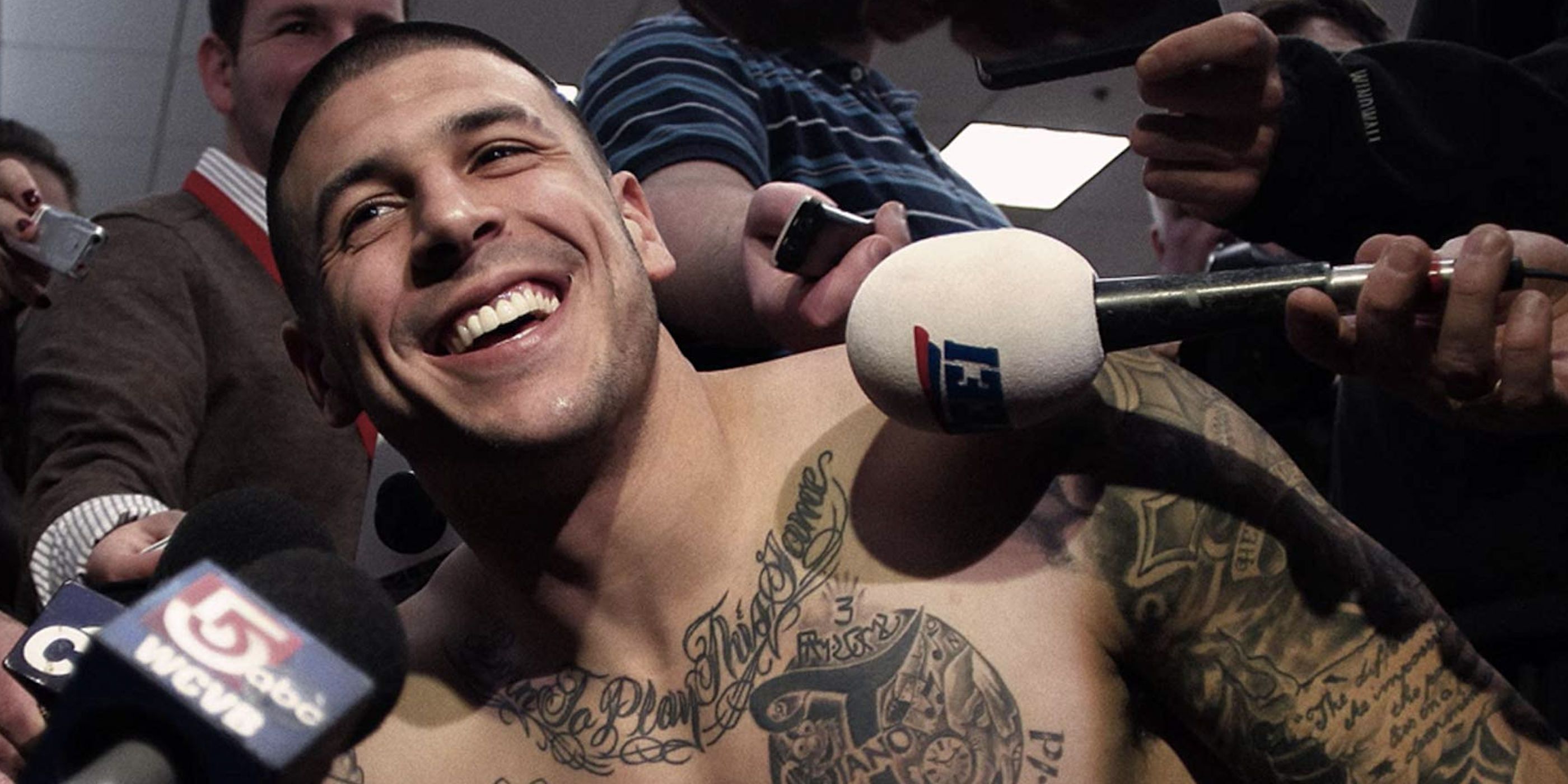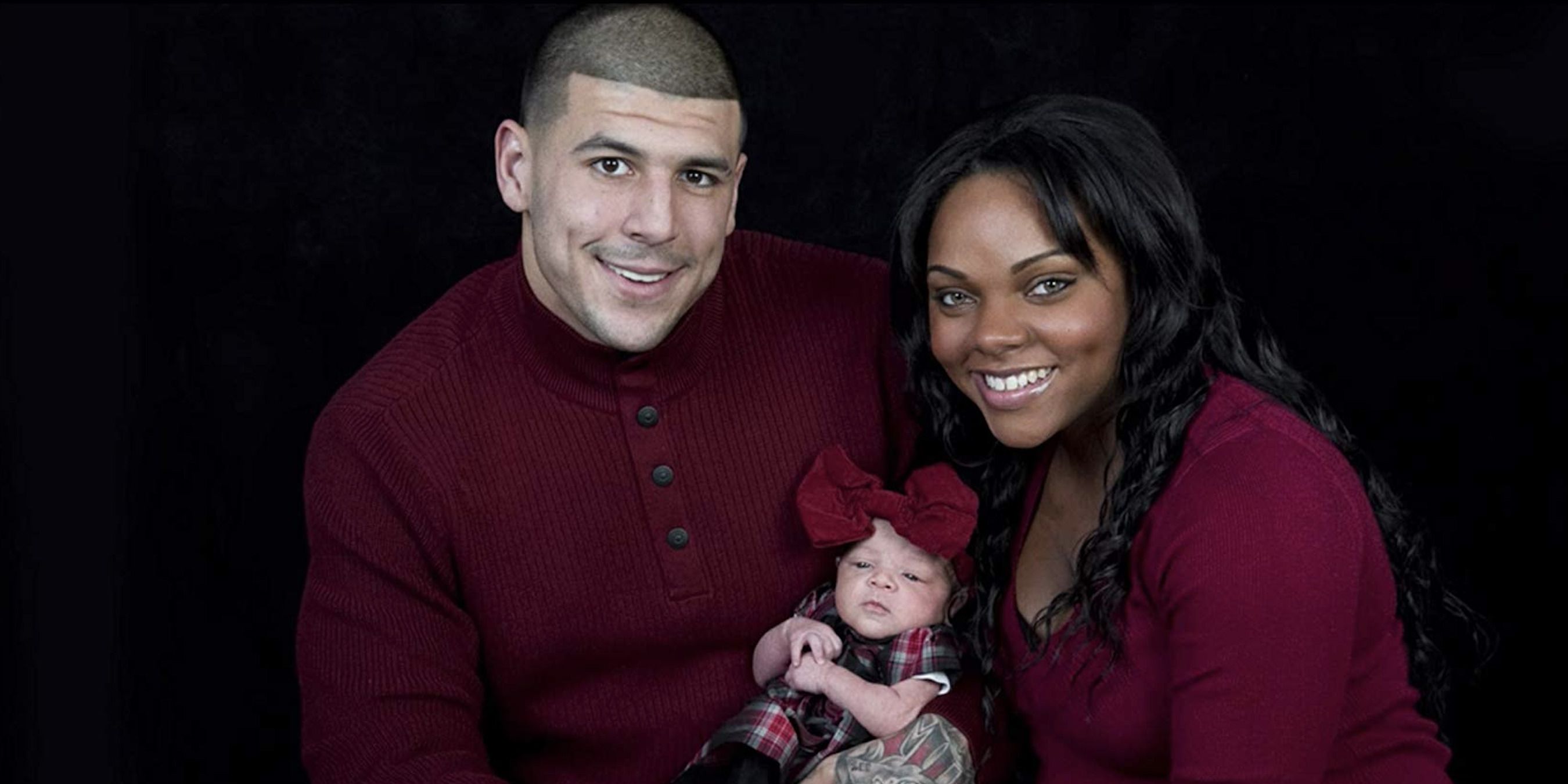Ruby of Life
Netflix’s Killer Inside: The Mind of Aaron Hernandez explores the life and times of a disgraced NFL star and convicted murderer - Aaron Hernandez. The three-part docuseries investigates Hernandez's personal and professional relationships, and how unprocessed trauma may have contributed to his 2017 suicide.
In 2010, the New England Patriots drafted two All-American tight ends, Rob Gronkowski and Aaron Hernandez. But whereas the former acclimated to coach Bill Belichick’s highly-successful system, the latter became known for his off-the-field problems; issues that seemingly began while playing at the University of Florida. Less than three years after signing a lucrative NFL contract, Hernandez was convicted for the first-degree murder of Odin Lloyd. He also also indicted for the 2012 Boston murders of Daniel Jorge Correia de Abreu and Safiro Teixeira Furtado, but was ultimately acquitted on April 14, 2017.
Five days after Hernandez’s double murder acquittal, he committed suicide at Souza-Baranowski Correctional Center in Lancaster, Massachusetts. In the days prior, reporter Michelle McPhee joked about Hernandez’s sexuality on the Kirk and Callahan radio show, and implied that he was a closeted homosexual. Killer Inside examines various rumors associated with Hernandez, and reaches the conclusion that sexual, physical, and emotional abuse transformed him into a violent and deeply conflicted individual. Here the main takeaways from Killer Inside on Netflix.
Aaron Hernandez Initially Viewed Jail As A Training Camp
Killer Inside on Netflix shows that Hernandez maintained a specific image upon first being jailed in 2013. Back then, the NFL star was viewed, by many, as a typical pro athlete; a masculine figure with elite physical talent. Despite being on suicide watch, an audio recording reveals that Hernandez claimed to have loved his “cozy” cell. During a phone conversation, his mother Terri states that all he ever needed was “structure.” Reporter Dan Wetzel describes that when Hernandez transitioned from a 7,100-square-foot mansion to a 7 x 10 jail cell, his demeanor and aloofness “chilled” veteran corrections officers.
According to Bristol County Jail guard William Camara, Hernandez was relieved that people didn’t have to rely on him anymore. On two occasions in Killer Inside, Hernandez also expresses his fondness for Harry Potter books. But upon first being incarcerated, the former New England Patriot seemed to genuinely believe that he’d be returning to fiancée Shayanna Jenkins. Hernandez was allowed outside twice per day, and spent his one hour of recreational time inside an 8 x 12 cell. Sheriff Hodgson states that “he often spoke of the fact that he wasn’t in jail, he was in training camp… that’s all he would allow his mind to believe.”
Aaron Hernandez Allegedly Had A Sexual Relationship With His High School Quarterback
Killer Inside repeatedly addresses speculation that Hernandez was gay. In audio recordings, Hernandez can be heard speaking negatively of homosexuals and transgender individuals, to both his fiancée and mother. But the first episode of Killer Inside includes on-camera interviews about Hernandez’s alleged sexual relationship with his high school friend and quarterback, Dennis SanSoucie (pictured above).
In Killer Inside, SanSoucie claims that he and Hernandez smoked blunts together in high school and had an “on-and-off” relationship between 7th and 11th grade. SanSoucie also reveals that he was “a small piece of Aaron’s sexual activity,” and that they continuously “experimented.” SanSoucie’s father, Tim - a corrections officer and former football coach - also speaks on camera throughout Netflix's Killer Inside, and recalls the evolution of his opinions on homosexuality. He states that “I was homophobic just as much as Mr. Hernandez [Aaron’s father] was.” At times, the SanSoucies' commentaries feel slightly scripted, if only for absolute clarity and transparency, but their stories do indeed reinforce the concept that Hernandez didn’t have a father who would be accepting of his true sexuality.
The Death Of Aaron Hernandez's Father Started A Downward Spiral
The masculine demeanor of Dennis Hernandez is thoroughly detailed in Netflix's Killer Inside. Known to many Bristol, Connecticut, locals as “The King,” Hernandez's father played college football at the University of Connecticut, and even named the family dog “UConn.” According to various Killer Inside interviewees, Dennis Hernandez took a tough love approach with his two sons, Aaron and D.J., and prepped them for potential football careers at the University of Connecticut. Aaron received a scholarship at age 14, and D.J. later played quarterback at UConn. But Dennis Hernandez’s January 2006 death started a downward spiral for his son Aaron.
When Dennis Hernandez passed away during routine hernia surgery, Aaron was 16 years old. Now, without a strong male figure in his life, Aaron is believed to have adopted an overtly-masculine persona, a way to deal with unprocessed pain. Killer Inside details how Aaron’s mother Terri immediately began a romantic relationship with relative Tanya Singleton’s husband, Jeff Cummings, who later moved into the Hernandez family home. At that point, according to Killer Inside, Aaron’s perspective changed significantly. He spent time partying at cousin Tanya’s home, and began hanging out with a rough crowd - the result of his home life being too difficult to properly deal with. At Tanya’s home, Aaron received new guidance and met the men who later become accomplices in the murder of Odin Lloyd. He also decided to attend the University of Florida rather than UConn, and began displaying questionable behavior that NFL scouts would later investigate during the draft process.
The New England Patriots Arranged For A Secret Aaron Hernandez Home
By 2013, Hernandez had established himself in the National Football League. Based on the evidence presented in Killer Inside, he and friend Alexander Bradley were connected to a 2012 double murder in Boston the year before, though neither were ultimately convicted. Bradley testified against Hernandez in court, but was discredited after sending incriminating text messages to his lawyer. Hernandez’s friendship with Bradley ended after he allegedly shot him in the face after an argument. Bradley initially filed a civil lawsuit but later reached a financial settlement with Hernandez. In Killer Inside, Bradley states in court that he wanted “revenge” after surviving Hernandez’s murder attempt.
Fearing for his life, Hernandez upgraded his home security system and purchased an armored car. He also reached out to Ernest Wallace and Carlos Ortiz - friends that he met after his father’s death, and who would later be accomplices in Odin Lloyd’s June 2012 murder. Hernandez then requested a trade from the New England Patriots, one that was rejected by Belichick. As a compromise, the New England Patriots set up Hernandez in a new home where he would reportedly chain-smoke marijuana. In Killer Inside, Boston Globe reporter Maria Cramer states that the Patriots “didn’t want to ask a lot of questions” in order to protect their financial investment. The Director of Player Development, Kevin Anderson, allegedly arranged for the new Hernandez home in April 2013, approximately two months before the NFL star would murder friend Odin Lloyd for unknown reasons. Hernandez’s true motivations are explored in all three parts of Netflix's Killer Inside.
The Aaron Hernandez Story Is Complex
Much has been speculated about Aaron Hernandez’s life and death. In Killer Inside, the convicted murderer's friends imply that he wouldn’t have taken his own life after being acquitted of a separate double murder, while others suggest that widespread rumors about Hernandez’s sexuality did indeed play a role in his suicide. Three handwritten notes were found next to Hernandez’s body, including one to fiancé Jenkins. Hernandez wrote that she’d be "rich," prompting speculation that he knew about the legal concept known as “abatement ab initio,” where convictions are dropped when a criminal dies but has not fully gone through the appeal process. Killer Inside briefly references an abatement case associated with Souza-Baranowski Correctional Center, where Hernandez was incarcerated. Meaning, it's likely that Hernandez would've heard about the story.
In Killer Inside, D.J. Hernandez claims that his brother Aaron was sexually molested as a child. The Netflix docuseries also suggests that Hernandez was emotionally traumatized by his father’s death, and that he believed sexual abuse might've affected his sexuality. Killer Inside culminates with a sequence about CTE (Chronic Traumatic Encephalopathy), and the revelation that a study of Hernandez’s brain showed “substantial damage that undoubtedly took years to develop,” according to Dr. Ann McKee, Chief of Neuropathology at Boston VA Health Care System. Killer Inside on Netflix doesn’t absolve Hernandez of his crimes, but does imply that years of emotional and physical trauma played a role in his decision-making process.

